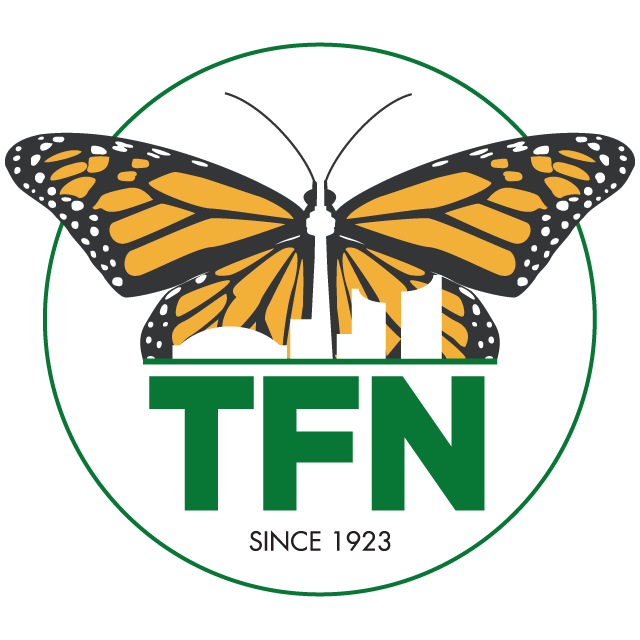The TFN Juniors enjoyed a wonderful morning Saturday Oct 14th, exploring the Meadoway in Fall at 19 Daventry Rd. So exciting to think of Toronto having this magnificent Pollinator corridor from the Don River to Rouge National Park. Our leader, Don Scallen brought his Stickbugs for the kids to handle and taught us about spiders. We searched for Goldenrod crab spiders on still blooming Goldenrod, but it was a chilly morning and we didn’t have any luck finding them. We were grateful to Don for his expertise identifying so many creatures, but also filling us in on their life cycles.
It was fun opening galls, and snacking on the contents! One of our long time members, Sonia, remembered doing this on a TFN Jrs outing, years ago, in Crothers’ Woods, and suggested we all try it! What we harvested were Goldenrod Ball galls, formed by the Spotted Winged fly. The mated female lays her egg on the Goldenrod stem in late May. The larva then hatches out and burrows into the stem. The larva hollows out an area in the stem while the plant grows around it, forming a gall. The larva is mature by winter and overwinters as a larva. Those of us who tried it, found the larva tastes sweet!!
Why is it sweet? This is an over-wintering trick. The larva makes sugar to pack between its cells, which causes the cells to lose water. The larva can then safely overwinter without risk of the cells freezing, expanding and bursting. In spring the larva chews a perfectly round exit hole in the wall of the gall, leaving just an outer skin. It then crawls back inside the gall, pupates and turns into an adult fly(Donald Stokes: A Guide to Nature in Winter). The adult fly does the final drilling of the exit hole and escapes from the gall. Many other insects can be found using these galls–such a safe, cozy spot to spend the winter.
We saw lots of native Tallgrasses–Big Bluestem, Indian Grass, interspersed with many other native plants. Some of us collected Roundheaded Bushclover, Grey-headed Coneflower, Stiff Goldenrod, and Cup plant seed.

The Meadoway is fabulous habitat for birds–we saw a Red-tailed Hawk, no doubt hunting rodents, and a Turkey Vulture. We also saw a flock of Kinglets and some American Goldfinches in their non-breeding plumage.
As the morning progressed we found some insects beginning to move about more energetically including some Lacewings, Bumblebees and lots of Milkweed bugs, large and small.
We stumbled upon a Birdbox being prepared as a cozy overwintering spot by mice–either Deermice or Whitefooted–we weren’t sure which. Some of them leapt from the front hole of the birdbox as deftly as a Tree Swallow would fly out. Don told us that these mice may not all be related–they stick together for warmth in the winter, whether they are related or not.
Finally we were surprised and delighted when one of our Dads produced sunglasses through which we could safely watch the beginning of the eclipse at noon. What a surprise treat to end our time together.

